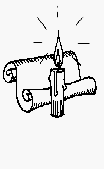|
|
|
|
The 20th of June is a day of commemoration for all those who sacrificed
their lives for the Eritrean struggle for independence, and for
those who lost their lives in the 1998-2000 border conflict with
Ethiopia. It is also a commemoration day for all those political
prisoners who lost their life in prison or were executed by the
Ethiopian regime during the liberation struggle.
The same day is also an honour and
a day of commemoration for all civilians, who were killed in Asmara
during the demonstrations in 1958 and for all civilians who became the victims of the Ethiopian government atrocities between 1962-1991
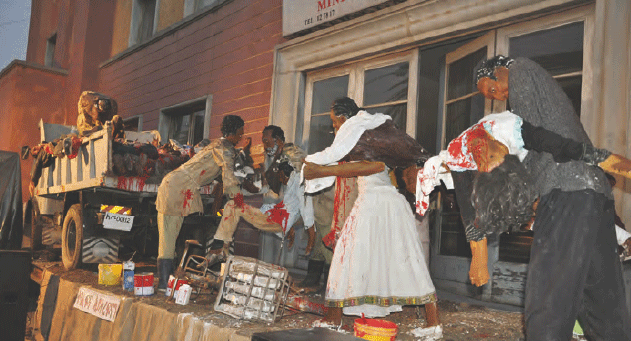 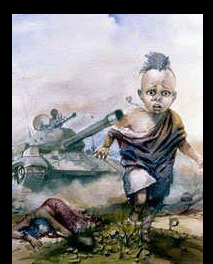 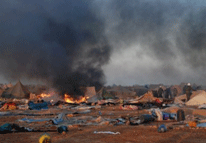 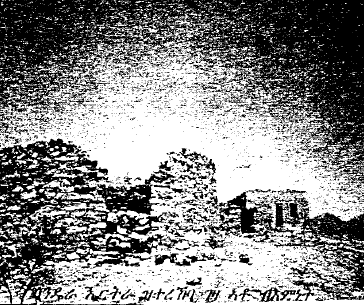
1960s
1965 at Merara, Hamassien province, and at Medeka, Keren province 67 men and 46 men respectively were killed by the Ethiopian soldiers .
On 11 of February 1967 many villages were burnt down in Barka district by the Second Ethiopian Army division.
On 12 February 1967, 21 detainees most of them teachers and government employees, were summarily executed in Tessenai
• Between February and April in 1967, the Ethiopian soldiers burned 62 villages, including Mogoraib, Zamla, Ad Ibrahim, Gerset Gurgur, Adi Bera, Asir, Fori and Ad Habab. Furthermore, 402 civilians were killed, and about 60, 000 cattle and camels slaughtered with machine guns and knives and by burning them alive. This was reported from local community leaders
• On 11 July in 1967 the villages of Eilet and Gumhot were burned, and 30 young men tied up and burned alive inside a house. Five other villages were burned over the following days, 51 people killed. 6, 000 domestic animals were killed. According to reports the soldiers singled out camels for slaughter, because they were vital for transport. Wolde Giorgis (1987:82) also cited that soldiers slaughtering cattle, eating what they wanted, and then leaving the rest to rot. He adds that sometimes soldiers would kill cattle just to get the livers.
• In November 1967, almost all the villages of Senhit 174 in all were destroyed by soldiers from the Second Ethiopia Army Division . Some reliable sources reported atrocities included: Kuhul and Amadi: the army ordered the people to collect in one place, where they were bombed by air force planes
• Asmat: the army opened fire on a wedding party, killing an unknown number
• Mrlefdp: thirty community leaders who met the soldiers and offered them hospitality were killed.
• In 1967, over 40 men were slit on the neck in front of their children and wives at Misyam
• 86 villages were burned in high land districts of Serays and Akele Guzai and at least 159 people killed.
1970s
• 32 civilans were shot dead when the army burned Arafali village. 88 people were executed when the people of Atshoma refused army order to relocated in a protected village this was in March of 1970.
• In November, 112 people were killed in a mosque at Basadare. The people were collected in the mosque by soldiers who said they would be safe there from a planned air strike; the soldiers then opened fire.
• On 1st December 1970 625 people were killed in the village of Ona..
• On 27 January 1971 about 60 civilians, most of them elderly people, were killed by soldiers in a mosque in the village of Elabored
• On10th of July 1974 over 170 civilians were massacred in Om Hager.
• On January 31, 1975, when the Eritrean fronts launched an attack on Asmara city. Over the following four days, government soldiers went on the rampage through the city. Civilians were dragged from their houses and executed. According to the Human Right Watch up to 3,000 people were killed in the city
• In March, 1975, 100 patients in Asmara hospital were killed, their bodies being taken out in trucks to be buried.
• On 9 March 1975 over 200 civilians in Agordat were killed by the Ethiopian soldiers
• On 13 March 1975 the Ethiopian soldiers rounded up the villagers of Woki on a piece of waste ground and shot 37 dead
• On 14 March, 1975 many women, children and old men were bayoneted and pregnant women were slit open / The Ethiopians then killed all the livestock and set fire to the house
• On 17 April 1975, 235 civilians in Hirgigo were killed by the Ethiopian army
• In summer 1975, 110 people in the village of Wokiduba were herded into an orthodox church and massacred.
• In 1975-1976 many youth were killed by steel wires and knifing down in the streets of the capital of Asmara
Source (Dines 1988; Human Rights Watch 1991)
The 20th June should be the day for remembering
to honour those innocent fighters who were killed in mysterious
circumstance or unofficially executed under different pretext by
the former revolutionary leaders (ELF & EPLF). On this Martyrs'
day, it is very painful for the families of the fallen martyrs who
were never officially told about the deaths of their loved ones,
when, in 1993, the then Provision Government of Eritrea announced
the names of martyrs.
“Where Is Your Brother?
|
The Eritrean Revolution’s Rule of Conduct: Ask Not About Your Brother
Teklay Aden, an EPLF security chief who defected to the Ethiopian regime in 1981, revealed that three thousand fighters were physically liquidated by the Front between 1973 and the time of his defection in 1980.

Habte-Selassie Tewolde Eyob Solomon Wolde-Mariam Musie T Mikel
Zekre Lebona states that Ibrahim Afa happened to ask about the fate of the senior leaders of the menkae, who had been under arrest for several years to Isaias Afwerki (one would presume, he should know). Isaias dismissed his question saying, “The case is closed. HowMesfin Hagos feels today when he thinks or reflects back. መስፍን ሓጎስ ኩሉግዜ ተሓላቓይ ናይ ኢሳያስ ኮይኑ፣ ነቲ ኢሳያስ ዝፍጽሞ ገበናት እናሸፈነ ክነብር ዝደሊ ሓላፍነት ዘይስመዖ ውልቀሰብ እዩ። ብቐሊሉ ዘኽፈኣሉ ዘጸብቐሉን ዘይፈልጥ ምዃኑ ዝሕብረካ ብዛዕባ ‘መንካዕ’ ተሓቲቱ ክምልሽ ከሎ፡ “ግቡእ መቕጻዕቶም እዮም ረኺቦም” በለ። እቲ ሕቶ ‘መንካዕ’ ኢሎም ይጸዉዑ እምበር ብኻልእ ኣዘራርባ እቶም ኣብ ቤት ፍርዲ ከይቀረቡ ገበኖም ከይተፈልጠን ከይተመርመረን ብዘይ ሓንቲ ክንዲ ጽፍሪ ትኸውን ቅንጣብ ጌጋ ከይተረኽቦም ብሓሶት ኣልዕል ኣቢልካ ስሞም ብምጽላም ዝቕተሉ ዝነበሩ ዘጠቓልል ሕቶ እዩ ተሓቲቱ። ነቲ ጉዳይ መንካዕ ብከመይ ትገልጾ ተባሂሉ ንዝቐረበሉ ሕቶ፡ ግቡእ መቕጻዕቶም እዮም ረኺቦም ኢሉ ዝሃቦ ብዱዕ መልሲ ኩሉ እዩ ሰሚዑዎ። መሊሱ መቕጻእቲ ዝበሃልexcrept fromወፍሮም ንገዘኦም ዘይተመልሱ (ሳልሳይን ናይ መወዳእታን ክፋል) |
|
Meharena Hadgu states that Mesfin Hagos was from the leadership and the present situation makes him fear of retribution. The charging committee was under the top leadership like Mesfin, Isayas and Romadan. Mesfin is afraid he will be asked of the injustice he participated in(Read more)
|
|
|
|
|
| |
|
|
|
|
Although the former leaders of the EPLF and ELF commemorate a martyrs'
day neither of them wanted to officially honour those fighters who
were killed by the EPLF and ELF security forces . For example, on
20th June the leaders of PFDJ did not mention any martyrs killed by
the EPLF during the liberation struggle; prisoners who died in prisons
or executed; and neither did they honour those youths who were executed
in the frontline during the border conflict with Ethiopia or killed
at Adi Aboute or Wia.
In the same way,
the ELF leaders never announced the names of fighters who were killed
by the ELF security force in 1970s. To mention some the Fallul movement
in 1977 and those fighters who were killed in Dankalia in 1978
“Where Is Your Brother?
Wolde Yesus Ammar the leader of the ELF-RC accused Abdella Idris of being sectarian in killing Melka. However Wolde Yesus has never said any thing about liquidation policy of the ELF against Fallul movement in 1977 . This was when Seyoum’ campaiged against the Fallul movement by saying “HA Hu Bel Falulay” through broadcasting over ELF’s radio programme from Omdurman. Why does Wolde Yesus keep silent about the ELF's victims?
|
|
 source Batalion 149_Fallul source Batalion 149_Fallul
The opposition leaders like Hussein Khalifa was elected to the Revolutionary Council Members at the 2nd ELF Congress in 1975. What are his motives in accusing Issayas for the crimes committed from 1970 and the present but keep silent about all the crimes committed by the ELF from 1965-1981. For example what of the fighters who were killed in Dankalia in 1978, Saed Hussien Mohammed was one of these who became the victim of the ELF in 1978.
“Where Is Your Brother?
The
liquidation of the 10 veterans ELF fighters were confirmed
by Ahemed Naser who was the chair man of the ELF at that time in the
following
We foiled this reactionary project by resolutely liquidating these elements
on May 22, 1978. The Eritrean Liberation Army units assigned this duty executed
it perfectly.” One of those martyrs was Hussen the founder of the
ELF in Cairo with Taha.
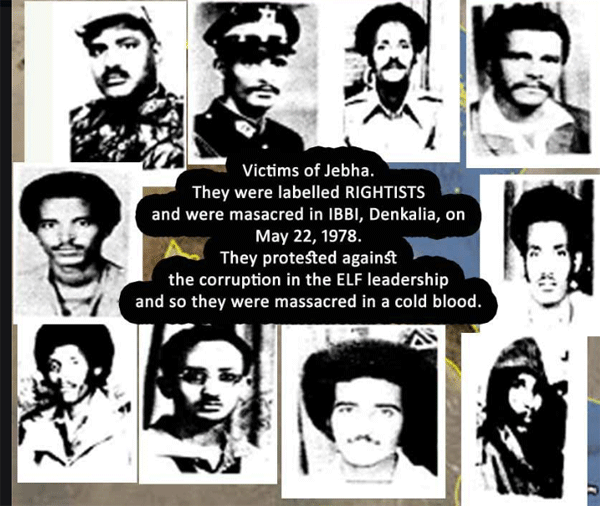
|
|
|
|
|
| |
|
|
As the EPLF and ELF’s legacy of the execution and killing of innocent fighters during the liberation struggle, the killing of innocent citizens has never stop after the liberation. In fact it was getting much worse during the broader conflict as many member of Eritrean Defence Force were executed by the order of their own military commande. On
this day we also need to remember not only the 19, 000 martyrs who
lost their lives in the 1998-2000 border conflict, but also all members
of the Eritrean Defence Force who were executed by the order of their
own military commanders and all prisoners who have died in PFDJ prisons
or executed
“Where Is Your Brother?
|
|
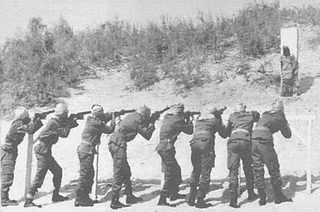
[ቅንጸላ ንጹሃት ሰባት ዝተወለፉ ኢሳይያስን ጀነራላቱን፣ ኣብ ግዜ ብረታዊ ቃልሲ ኣብ ጸልማት ጥራይ ኣይኮኑን ገበን ፈጺሞም። ጸሓይ ምስ በረቐት’ውን ንብርሃና ክንዲ ቅንጣብ ከይቆጸሩ ነቲ ወልፊ ዘሕደረሎም ደም ምስታይ ብዝለዓለ ደረጃ ቀጸልዎ። ኣብ ግዜ ምስጢራዊ ምብራዕ ኲናት ባድመ 1998-2000 ዓ.ም. ብትእዛዝ ጀነራላት ብተመልከተለይ ዝተረሸኑ ዕሸላት መንእሰያት ኣዴታቶም ይቑጸርኦም ኢልካ ኢዩ ዝሕለፍ። እዚ’ውን ብመዓልቱ ክጸሓፍ ኢዩ። Source ትልሚ፣ ንዘርኢ ክርዳድ ዓስራይ ክፋል
|
|
 
ዘስካሕክሕ ፍጻሜ ዓዲ ኣበቶ [part 1][part 2][part 3][part 4][part 5]
The Massacre of Eritrean War Veterans 1994 by Eritrean Government[video] |
 |
|
|
|
|
|
| Furthermore on 18 June 1997, 150 Eritrean men were were executed. Mehari, Mehari Yohannes, in an interview with Awate.com said that Once, over 30 individuals were loaded up and they were executed (“ny hywet sgumti tewesiduwom”)after being tried by a committee . Another source also mentioned that on January 23, 1997, with a secret order from Abraha Kassa, the chief ofthe National Security Office of Eritrea, and under the direction of President Isaias Afwerki, security forces rounded up 150 Eritrean Muslim men under the guise of being collaborators with the Islamic Jihad movements. They were picked from their homes and workplaces. News coming from Asmara has confirmed that, six months after they were taken in custody, with the knowledge of both [Abraha Kassa and Isaias Afwerki] they were executed on 18 June 1997 from 8:20 pm to 2:00 am the next day [ find more from From Archive : the PFDJ fascistic crimes 1993-2010 |
- On 4 of July 1994 the massacre of disabled Liberation War veteran (Akale Senkulan Tegadelti )in Mai-Habar
- እቲ ዘይንቡርን ዘይሕሰብን ብብረት ዝተለብለበ ምንቅስቓስ ስንኩላን ማይሓባር ናይ 1994 እዉን እንተኾነ ዝተወደበ ብዘይምንባሩን ካብ ሰብ ሕልና ደገፍ ስለዝተነፍጎን ንኣረሜንነት ትእዛዝ ሚኒስትሪ ዉሽጣዊ ጉዳያት ኣይፋል ዝብል ሓደ ሓርበኛ ካብቲ ሚኒስትሪ ስለዝተሳእነን ቀጺሉዉን ነቶም ሽዑ ዝተሰዉኡ 14 ንጹሃት ተጋደልቲ ቅድም ንሃገራዊ ነጻነት ኣካሎም ዝጎደሉ ሽዑ ንስለ መሰል ደቂ ሰባት ዝተጣበቑ ስለምንታይን ኣብ ምእንቲ እንታይን ኢሉ ዘጻርን ንተጠያቒ ኣብ ፍርዲ ዘቕርብን ሓደ ካብ መላእ ባይቶ ኤርትራ ዘይምርካቡን ኣብ ዓለምና ካብ ዝዝንተዉ ፍሉያትን ኣሕዘንትን ታሪኽ ኮይኑ ምትራፉዩ። [sourceስለምንታይ 20 ዓመታት ዕድመ ምልኪ ኣብ ኤርትራ
|
|
|
|
|
|
Crime committed against civilians by the ELF and EPLF during the liberation struggle
 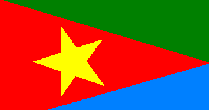
During the liberation struggle thousands of civilians
became victims of the Ethiopian government and also of the ELF and
EPLF. There were many stories that the public used to hear about
crimes committed against the civilians by both fronts (ELF and EPLF)
through family and friend of the victims. Unfortunately only a few
of the accounts are recorded by Human Rights Watch and others.
“Where Is Your Brother?
- In the 1960s the Red Sea Afar people also became victims of the ELF leaders, according to Afar Forum, many civilians mostly innocent children, the elderly and women were mass murdered and buried in a barbaric manner at a place called Nabro. That was the response the people got from the so called “liberators”. Afar Forum adds that. Some of the blind measures taken by the so called political groups are:-The Ramlo (Ar’anu) forced genocide in 1968 by ELF; The 1974 direct and indirect mass killings by ELF and The 1968 genocide by the EPLF in 1968 in a place called Bori Asela.Source Destructive strategies of the EPLF regime
- In the 1960s there was a report of the ELF leadership crimes on highlanders. Megesteab (2005: 43) states that fifty Christian peasants were also executed at the behest of the ELF leadership . Another version of this story between 15 and 25 civilians were killed by the ELF in Shimbare, they were killed by vigilante off duty tegadelti of ELF, who were thought to be avenging after their village was burned by Ethiopian soldiers. (Araya 2005). However, the ELF leadership should be blamed for the death of civilians who were killed by the ELF fighters (tegadelti)
- Year 1967, the nightmare at Karkasha village: where Jebha forces, burnt to the ground, half of Karkasha village, including this writer’s family house and property; beat up the inhabitants of Karkasha and labelling them as “jawasis” meaning spies. Deliberately they set fire in a house, killing all 7 members of the same family. By then Karkasha was not an Ethiopian garrison. In fact, on that fateful day, it was Jabha’s temporary “difa or trench” to ambush the Ethiopian mobile forces, on Shambako/Barentu line, to hit and run. So why did they burn the village, property and human lives? Well, just hatred, discrimination and racism. Read more
- Merhawi Kunfu in his article the Eritrean Revolution: Born of a Shifta father, produced a Shifta system – part 2 and fina also wrote "The ELF committed genocide crimes against the innocent Christian Tigrigna right from the beginning of the armed struggle. Many villages and properties in Akeleguzay and Seraye such as Qohain were destroyed and looted. Many Christian peasants and traders were murdered in mass only for being Christians. I myself have lost a relative in the mass murder of 49 innocent peasants committed by the ELF in July 1967 in Shimbare, near Tokobya"
- According to Human Rights Watch 1991:48, in 1971, 52 civilian villagers were burned to death in their huts in a village name Debre Sila by the ELF for non-payment of the ELF demands (Human Rights Watch1991:48). There was also another story on March7, 1971, the ELF plundered the village of Halib Menal, stealing many cattle, after the villagers had killed two ELF fighters while resisting an ELF attempt to occupy the village two day before. Individuals who failed to protect ELF property entrusted to them were also summarily executed.
- There was a similar story about the atrocity against Ato Haile by the ELF at Wutuh in Summer (kiremti) 1971.
According to the eye witness, Ato Haile (Chieka Adi - Village Maaya), was shot down, in front of elders forcibly gathered, at a neighboring village Wutuh (where he was hiding as he could not meet their excessive request for money and other immoral demands). They ignored the elders appeal to set him free, by pledging them he would come up with their demands should he is given more time. At the time, they terrorized the gathered elders saying "Deki halima, kab Tub adetatom tementilom teharidom, nisikhum dima kemzi kegatimekum iyu
- In 1975 there was also a story about 12 youths from Adi-Kehei area who had a plan to join the Front were wrongly killed as a spies by the ELF. Among those youths who were killed by the ELF:
1.Indemyze Mohammed
2 Hagos Ibrahim was known as wdi Ibrahim Nur, the owner of a shop in Adikehi.
- Furthermore, in 1976 there was a report of the execution of civilians by the ELF at Adi Aret village. According to the eyewitness, more than 10 civilians were wrongly killed as spies by the ELF in one day. He describes the way of their execution as followings. The victims were ordered to dig their own graves, thereafter they were blindfolded and stood on the edge of the graves before they were executed. After they were executed by firing squad their bodies were buried by the villagers from orders they received from ELF fighters. This was done deliberately to terrorise the villagers. There were many stories of atrocities against civilians by the ELF like these mentioned in the 1970s
- During the liberation struggle many unarmed civilian also became the victims of the EPLF. Although all those crimes committed by the members of the National Guard (Halewa Sewra) were kept secretly, Teclai Aden in his interview on December 23,1980 revealed that the EPLF killed hundreds of peasants. He adds that many peasants were taken by the members of National Guard and were executed.
- Alem Tesfay (2003) listed name of 16 pensioners from Keren who were executed in late 1978 after taking them to Sahel as prisoners. Among of these prisoners were Ato Fitwi Tesfazghi & Ogbamicahel Asgodom
“Where Is Your Brother?
Ato Fitwi Tesfazghi & Ogbamicahel Asgodom
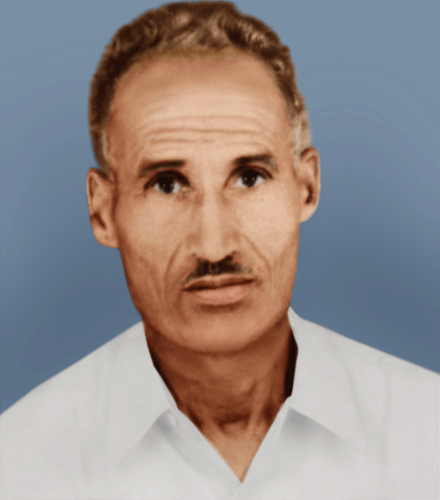 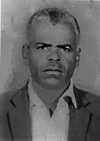
The number of martyrs of the liberation struggle is not the officially
announced 65, 000 but higher than this number because 5, 000 innocent
fighters who were killed by the EPLF security and others were not
included. Generally the number of martyrs among civilians and fighters
is estimated to be more than a hundred thousands. Stefanos (2000)
and White (2005) reported that the number of people killed during
the 30 years of liberation war was estimated around 250, 000.
Therefore, the nation must commemorate Martyrs
Day of 20th June as a day to remember all those martyrs who were
killed in the battlefield in both pre- and post- independent Eritrea,
by the EPLF and ELF security forces or special units as well as
all the civilians who were killed by the Ethiopian army/security
forces. |
|
|
|
|
|
|
